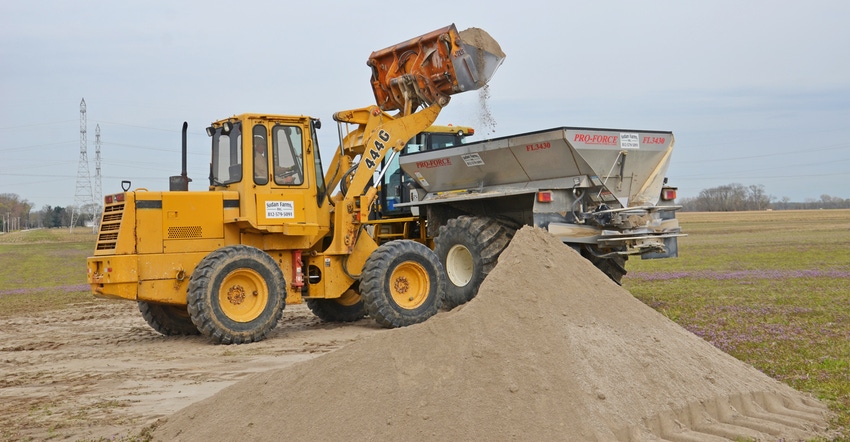September 30, 2019

The plan was to spread lime at variable rates this fall on 800 acres going to corn in 2020. The pH in those fields varies from 5.6 to 6.5, with most areas around 6.0 to 6.1. We try to apply lime regularly so that our pH levels stay in reasonable shape. Money is super tight. Can we skip the application this year and pick up with our regular program in those fields next fall?
The panel of Indiana certified crop advisers answering this question includes Betsy Bower, Ceres Solutions, Terre Haute; Traci Bultemeier, Corteva/Pioneer, Fort Wayne; and Dan Ritter, Dairyland Seed, Wabash.
Bower: Money is tight for every customer I know. Yet, keeping on track with lime applications is one of the better investments you can make in your operation. While soil pH levels in the 6.0-to-6.1 range are still considered ideal, soil pH levels in the 5.6 range are starting to get low enough that some soil residual herbicides could begin to get compromised regarding weed control.
Rhizobia bacteria that form the nodules to fix soil nitrogen for soybeans don’t work well at those pH levels, resulting in smaller and fewer total nodules. Uptake of key nutrients like nitrogen, phosphorus, potassium, sulfur, magnesium and calcium is reduced. If you’re going to invest in crop nutrition, don’t you want the peace of mind that your soil chemistry is working for you to maximize the fertilizer investment? Are you sure you want to compromise soil function that provides one of your best returns regarding crop yield?
I realize you said these fields were going to corn in 2020. However, if we consider soybeans the following year in 2021, it’s best to get lime applied now, as it takes more than one year to break down the lime and neutralize low soil pH readings. Those 5.6 levels could take a real toll on soybean rhizobium bacteria a year from now.
Bultemeier: Skipping the lime application this year may result in higher future lime costs per acre, a longer timeline to reach the desired pH level, and potential yield loss due to poor crop performance or herbicide reactions. You need to realize there are likely hot spots of much lower pH that haven’t been caught in a soil test. Poor crop performance or herbicide issues could especially be problems in those spots. Additionally, having lower pH areas may end up costing yield since certain nutrients become fully available to plant roots only at pH levels above 6.0.
The Purdue University Corn and Soybean Field Guide contains a graphic in the soil fertility section which illustrates how nutrient availability to plant roots varies depending upon pH levels. It would be worth studying that chart before you make a final decision.
Ritter: If you can make the lime application, I would spend the money. I have heard it said your cheapest fertilizer is lime. Low pH can affect the availability of crop nutrients and make their utility less efficient. The other question is this one: Are you guaranteed that money will not be as tight or even tighter next year? Then you may face the need to apply two years’ worth of lime with even fewer financial resources at your disposal.
You May Also Like




